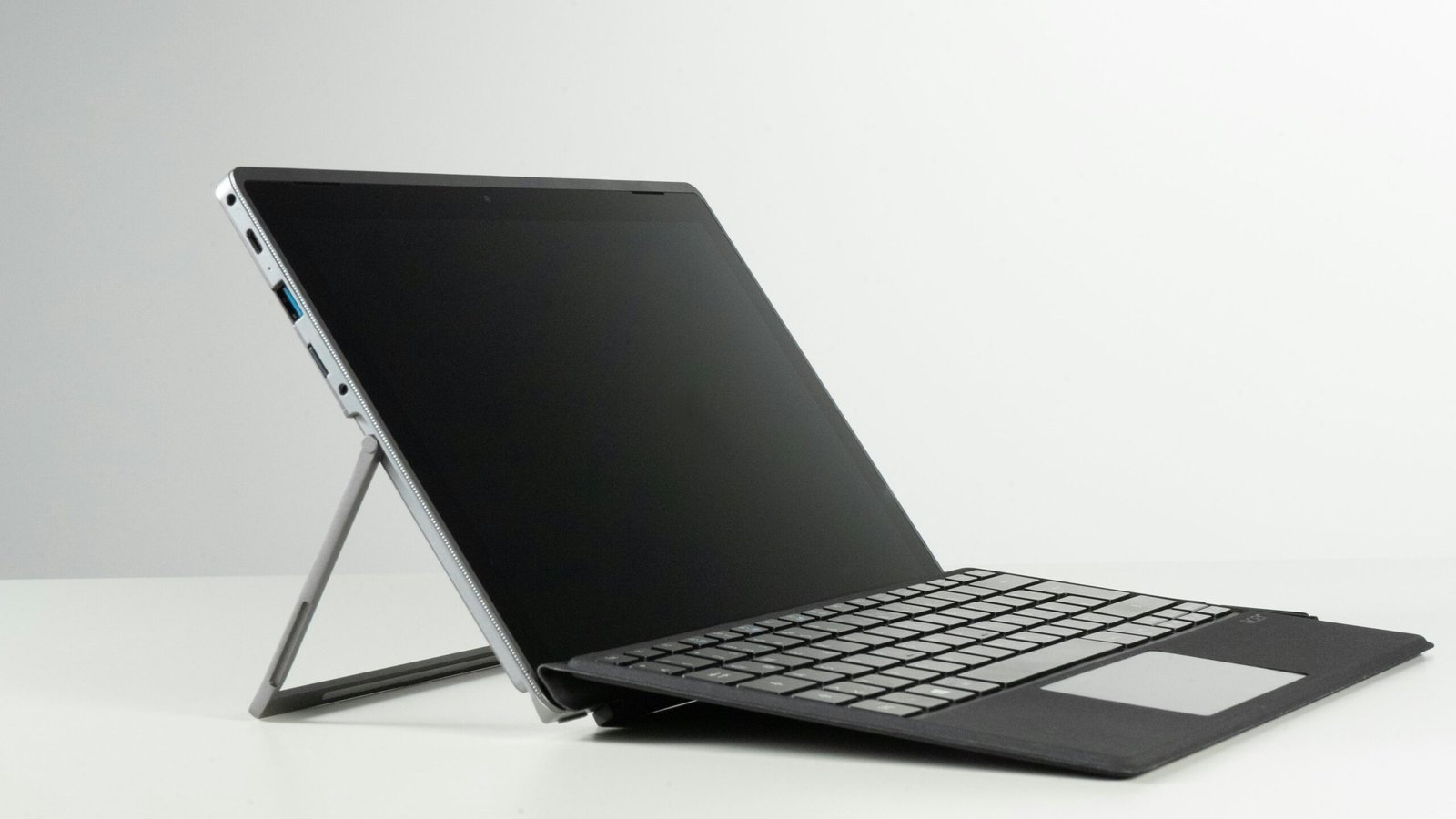Introduction to the Future of Smartphones
The landscape of mobile technology is evolving at an unprecedented pace, and consumers can expect a multitude of innovations as we approached September 2025. The upcoming phones are set to reflect significant advancements in design, functionality, and user experience. With major manufacturers competing aggressively to capture market share, the introduction of new features and capabilities will not only redefine how we use these devices but also enhance our daily interactions with technology.
As we look forward to the next generation of smartphones, several trends are emerging that will likely shape the industry. One notable trend is the integration of artificial intelligence, which is expected to offer more personalized and intuitive user experiences. This could manifest in adaptive interfaces that learn from user behavior, thereby optimizing performance and accessibility. Additionally, improvements in camera technology, including enhanced low-light performance and advanced computational photography, are anticipated to attract photography enthusiasts who rely heavily on their phones for capturing moments.
Furthermore, the demand for greater connectivity and faster processing speeds suggests a shift towards 5G-optimized devices. This will enable smoother streaming, more responsive gaming, and an overall seamless experience for users. Another trend expected to gain momentum is sustainable technology, with manufacturers exploring eco-friendly materials and practices aimed at reducing the environmental impact of smartphones.
In summary, the upcoming phones set to launch in September 2025 promise to deliver a host of exciting advancements fueled by innovation and competition among major players in the market. As consumers, it will be crucial to stay informed about these trends, as they will undoubtedly influence how we integrate smartphones into our lives moving forward.
Key Players in the Smartphone Market
The smartphone market is dynamic, and as we anticipate launches in September 2025, several key players are poised to make significant contributions. Prominent companies such as Apple, Samsung, and Google are at the forefront, along with several emerging brands that are rapidly gaining traction. Each of these manufacturers not only plays a crucial role in shaping the technology trends but also influences the competitive landscape within the industry.
Apple, known for its high-end devices, sets the standard for innovation and customer experience. The company’s iPhone lineup continues to foster consumer loyalty and attract new users, which is likely to remain a critical factor in September 2025. With expectations for advanced features such as enhanced AI capabilities and improved camera technology, Apple’s upcoming models are eagerly anticipated by both consumers and industry analysts alike.
Samsung, a leader in the Android segment, boasts a diverse range of smartphones to appeal to various market segments. Known for its Galaxy series, Samsung continuously pushes the envelope with its cutting-edge technology and innovative design. Their forthcoming releases in September 2025 are expected to include advancements in foldable technology, 5G capabilities, and improvements in battery life, which will cater to a tech-savvy audience.
Google’s approach to smartphones, heralded by its Pixel series, focuses on integrating artificial intelligence and software optimization with hardware. As the company continues to refine the Android operating system, its upcoming models are likely to emphasize camera performance and seamless integration with Google services, enhancing the overall user experience.
In addition to these giants, emerging smartphone brands are entering the market with fresh ideas and competitive pricing. Companies such as OnePlus, Xiaomi, and Realme are redefining the concept of value, delivering high-quality devices at lower price points. Their innovations and strategic approaches are vital in creating a balanced competitive landscape in the smartphone industry.
Innovative Features and Technologies on the Horizon
The smartphone industry is poised for an exciting transformation with the upcoming launches in September 2025, featuring innovative advancements that are set to redefine user experiences. A prominent focus in these new models is expected to be the enhancement of camera technology. Manufacturers are investing heavily in multi-lens systems that can capture high-resolution images in diverse lighting conditions, alongside the integration of AI capabilities that optimize photography through advanced image processing and real-time adjustments. This shift towards artificial intelligence will not only improve photography but also facilitate seamless interactions with the device, allowing for a more personalized user experience.
Battery technology is another area undergoing significant enhancement. As demand for longer battery life continues to rise, upcoming phones are likely to feature more efficient battery materials and smarter power management systems. These innovations are expected to lead to phones that can sustain longer usage periods without compromising on performance. Additionally, rapid charging technologies are evolving, allowing devices to recharge in a fraction of the time required by current models. This could dramatically reduce the inconvenience often associated with charging schedules.
Moreover, the advent of flexible displays is changing the design landscape of smartphones. Foldable or rollable screens are anticipated to become more mainstream, providing users with larger displays for enhanced media consumption while maintaining compact forms for portability. These innovative designs not only maximize screen real estate but also enable new functionalities that cater to multi-tasking and immersive entertainment experiences. As industry leaders unveil these cutting-edge designs and features, it is clear that the future of smartphones is geared towards enriching user engagement through improved functionality and adaptability.
Consumer Trends and Expectations
In recent years, the smartphone market has undergone significant transformation driven by consumer behaviors and preferences. As technology continues to advance, consumers are becoming increasingly discerning about their choices, shaping the innovations we can expect in upcoming phones. One of the primary factors driving this evolution is the demand for eco-friendliness. Many consumers are actively seeking devices that utilize sustainable materials and manufacturing processes. This aligns with a broader societal trend towards environmental consciousness, prompting manufacturers to prioritize sustainability in their phone designs in an effort to attract eco-minded buyers.
Pricing strategies are another critical element influencing consumer expectations. As the market becomes saturated with new entrants and innovations, consumers are looking for more value for their money. This has prompted companies to adopt competitive pricing, offering diverse models that cater to various budgets while maintaining high-quality features. As a result, upcoming phones are likely to showcase impressive capabilities at more accessible price points, appealing to a broader audience.
Customization options are also gaining importance among consumers. With the desire for individuality on the rise, many users appreciate the opportunity to tailor their devices. Features enabling personalized aesthetics, software interfaces, and specifications can enhance user experience, allowing consumers to truly make their phone their own. As manufacturers contemplate new releases, they are likely to focus on providing increased customization options to meet this demand.
Furthermore, the growing need for seamless connectivity and entertainment plays a vital role in shaping consumer expectations. With the proliferation of mobile applications, streaming services, and online gaming, consumers seek phones that offer robust connectivity and superior multimedia experiences. The integration of 5G technology and enhanced processing power in upcoming devices is anticipated to cater to these demands, providing users with unmatched speed and quality in their connectivity and entertainment options.
Market Predictions for September 2025
As we approach September 2025, the smartphone market is poised for significant transformation, influenced by an array of economic factors and technological advancements. With the global economy experiencing fluctuations due to inflation and shifting consumer behaviors, manufacturers will need to adapt to a landscape characterized by cautious spending. Consumer preferences are shifting toward devices that offer not only premium features but also exceptional value. This trend may lead to an increase in demand for mid-range phones that provide high-quality technology at accessible prices.
Emerging trends, such as the rise of 5G technology and advancements in artificial intelligence, are also likely to shape the market. As 5G networks expand, consumers will seek phones that can fully utilize these capabilities. Phones equipped with enhanced processing power and improved battery life will be favored, allowing users to engage in seamless connectivity and efficient multitasking. Adaptations in user interface through AI-enabled features will also cater to a growing segment of tech-savvy consumers.
Moreover, sustainability will play a crucial role in shaping consumer choices. With increasing awareness of environmental issues, customers are increasingly preferring manufacturers that prioritize eco-friendly practices in the production of their phones. This has prompted brands to invest in recyclable materials and adopt more sustainable manufacturing processes. Such initiatives not only promote brand loyalty but also serve as a competitive edge in the crowded smartphone market. However, manufacturers will face challenges, including supply chain disruptions and rising component costs, which could affect pricing strategies and availability.
In conclusion, the smartphone market in September 2025 is expected to reflect a delicate balance between innovation, consumer demand for cost-effectiveness, and commitment to sustainability. Manufacturers who can navigate these dynamics effectively will likely thrive in this evolving landscape.
Sustainability and Eco-Friendly Approaches
In recent years, the smartphone industry has felt a significant shift towards sustainability and eco-friendly practices. With growing concerns over e-waste and environmental degradation, manufacturers are increasingly recognizing the importance of adopting greener methods in their production processes. As we look forward to the upcoming phone releases in September 2025, several manufacturers are expected to showcase their commitment to sustainability through innovative design and materials.
One of the leading trends is the use of recycled materials in the construction of smartphones. Many companies are making strides in incorporating recycled plastics, metals, and even rare earth elements into their devices. For instance, some brands have announced plans to utilize recycled aluminum for their phone casings, significantly reducing the carbon footprint associated with new raw material extraction. This move not only eases the burden on natural resources but also helps in decreasing the overall impact of electronic device production.
Additionally, there is a concerted effort within the industry to design phones with longevity in mind. This includes creating devices that are easier to repair and upgrade, which can considerably reduce the temptation for consumers to discard their phones for newer models. With modular components gaining traction, users will have the option to replace specific parts like batteries or screens, extending the life of their devices and limiting waste.
Furthermore, the demand from consumers for eco-conscious brands is at an all-time high. More and more individuals are prioritizing sustainability when making purchasing decisions. This shift is prompting manufacturers to adopt sustainable practices, not only to satisfy consumer preferences but also to remain competitive in a marketplace that increasingly values environmental responsibility. As companies unveil their latest phones, the commitment to sustainable innovation will likely be a focal point, offering consumers not just advanced technology but a promise of environmental stewardship.
Security and Privacy Enhancements
As smartphones continue to evolve, the need for robust security and privacy measures becomes increasingly paramount. In September 2025, we anticipate a substantial leap in the implementation of security features designed to protect user information from emerging threats. One noteworthy advancement is the incorporation of biometric protection systems, which may utilize enhanced facial recognition and advanced fingerprint scanning technologies. Such measures not only provide convenience but also significantly bolster the defenses against unauthorized access.
Data encryption remains a fundamental component of smartphone security. With rising concerns over data breaches and privacy violations, we expect new phones to adopt advanced encryption methods. These innovations could entail the use of end-to-end encryption for messaging services and better encryption algorithms for stored data. Such developments aim to ensure that user information is safeguarded, even if the device falls into the wrong hands.
Moreover, emerging technologies such as decentralized identity solutions are anticipated to play a significant role in protecting user data. By enabling users to have more control over their personal information, these innovations reduce the reliance on centralized data storage, which is often a target for cyber attacks. Implementing such systems within smartphones can enhance privacy by minimizing the data that is made available to third-party applications.
As the smartphone market progresses, manufacturers are expected to focus not only on enhancing device capabilities but also prioritizing the safeguarding of user data. With the combination of biometric systems, advanced encryption, and decentralized identity technologies anticipated for upcoming models, consumers can expect a more secure mobile experience. By addressing rising security concerns, these innovations are set to redefine how users interact with their phones and protect their personal information.
Potential Challenges Facing Phone Manufacturers
The smartphone industry is on the brink of significant transformation as we approach September 2025. However, several challenges loom over phone manufacturers, which could impede their ability to innovate and deliver on consumer expectations. One pressing issue is the ongoing supply chain disruptions that have affected various industries globally. The procurement of essential components, such as semiconductors and batteries, is increasingly complicated due to geopolitical tensions and demand fluctuations. These issues could lead to delays in the production of new devices, potentially hindering the timely launch of anticipated smartphones.
Competition saturation poses another considerable challenge. The smartphone market has seen a proliferation of brands, each vying for consumer attention with cutting-edge technology and design. As major players ramp up efforts to stand out, the race for differentiation has intensified. This heightened competition can lead to price wars, squeezing profit margins and compelling manufacturers to rethink their pricing strategies. Companies must not only innovate but also anticipate consumer preferences to stay relevant in a crowded marketplace.
Market volatility also presents a persistent threat to the smartphone sector. Economic shifts and changing consumer spending habits can directly impact sales figures. In an era where sustainability and eco-friendliness are becoming increasingly important to consumers, manufacturers may need to pivot from traditional materials and processes to align with evolving demands. Adapting to such market dynamics could require substantial investment in research and development, as companies strive to balance profitability with consumer satisfaction.
To navigate these challenges, phone manufacturers must adopt proactive strategies, focusing on enhancing supply chain resilience, honing their competitive edges, and staying attuned to market changes. By addressing these potential issues, they can continue to build innovative devices that meet the dynamic needs of consumers in 2025 and beyond.
Conclusion: The Future of Smartphones is Bright
As we approach September 2025, the smartphone market appears to be on the brink of transformative advancements. The trends and innovations anticipated for release during this period signal an exciting future for mobile technology. With numerous companies gearing up to unveil their latest designs and features, consumers can expect to see significant enhancements in performance, usability, and sustainability.
One of the most pressing themes is the integration of artificial intelligence into smartphones. This development not only enhances the user experience through personalized interactions but also optimizes the phone’s capabilities. Enhanced cameras, longer battery life, and improved processing power are expected to be at the forefront of these innovations, paving the way for a new era of functionality and efficiency. The potential introduction of foldable and flexible designs may also redefine how users interact with their devices, offering greater versatility in how smartphones are utilized.
Furthermore, consumers are becoming increasingly aware of the environmental impact of their electronics. As a result, phone manufacturers are now prioritizing eco-friendly materials and practices in their production processes. This shift reflects a broader commitment to sustainability that resonates with a significant segment of the market. In addition to ethical considerations, these innovations often lead to more durable and efficient devices, which could enhance overall user satisfaction.
In conclusion, the upcoming smartphone launches in September 2025 promise to captivate users with cutting-edge features and compelling designs. Staying informed about the latest trends will be essential for tech enthusiasts and casual users alike. As innovations unfold, the upcoming lineup of phones is poised to not only meet but exceed expectations, heralding an exciting time for consumers in the ever-evolving mobile landscape.





